|
HOME: www.hiltonpond.org |
|||
|
COSTA RICA PORTFOLIO 2012 Whenever we take groups to Central America to study Ruby-throated Hummingbirds, our eyes are understandably drawn to sights of many other tropical animals and plants that surround us. Most of the time we concentrate on the task at hand--observing, catching, and banding our target species--but we also try to aim our camera at the people, places, and things we think folks back home might enjoy. To that end we offer this week a potpourri of images mostly from Guanacaste Province, Costa Rica--site of our most recent Operation RubyThroat expedition. We hope you enjoy our Costa Rica Portfolio 2012--and that you'll consider signing up for one of our future trips to see these all these wonderful things for yourself.
All text & photos © Hilton Pond Center We must start out, of course, with a photo of a Ruby-throated Hummingbird--this one a female perched at sunset on a twig overlooking a vast nectar-laden Aloe Vera field that provided her with breakfast, lunch, and supper. This bird hatched out somewhere in North America in summer 2011 or before and migrated south--at least once--to spend her "winter vacation" in northern Guanacaste Province near Liberia.
All text & photos © Hilton Pond Center Varieties of large Owl Butterflies (Caligo spp.) with wingspans of five inches or more are common throughout Costa Rica, especially in the moist forests of the Caribbean slope. They are mostly crespuscular--flying at dusk and dawn when they have a better chance of avoiding predators. When they spread their wings and show off their false eyespots, they really do resemble owls. We found this one--Caligo prometheus--east of San Jose.
All text & photos © Hilton Pond Center The brilliant blossoms of the Pink Poui (Tabebuia rosea) are always spectacular against clear blue February skies in Guanacaste-- especially if the individual tree like the one above has darker rose-colored flowers as opposed to some pale shade. Pink Poui is in the Bignoniaceae--the same family as Trumpet Creeper and Catalpa--and is visited by hummingbirds and other nectar-eaters. It begins blooming a month or two after the rainy season ends.
All text & photos © Hilton Pond Center We're always impressed with the massive four-foot-long dangling nests of Montezuma Oropendola, which breeds communally. In the photo above, a dominant and much-larger male looks on while a female flies in with nesting material she will weave into place. Oropendolas are among the largest members of the Blackbird Family; adult males are up to 20" long.
All text & photos © Hilton Pond Center We've been training our favorite tico Ernesto Carman Jr. (above left) in the intricacies of banding hummingbirds and other Neotropical migrants, and he's exceptionally good at the task. As always, citizen science volunteers on our Operation RubyThroat expeditions also learn a great deal about birds by serving as scribes during the banding process--as was the case with Madeline Herth (above right) of Long Island NY.
All text & photos © Hilton Pond Center Madeline's son Garrett (above) was deadly serious about all this hummingbird work. In fact, it was because of Garrett that his father Greg and his mother Madeline all signed up for our Guanacaste expedition. It was apparent Garrett did more advance reading and studying for the trip than any participant we've ever had. His questions were unlimited and insightful--and welcome.
All text & photos © Hilton Pond Center Perhaps the hardest task performed by the Savvy Seven-12's was getting a dozen or more 42-foot-long mist nets deployed each morning in the aloe fields despite sometimes very gusty winds. Sunny, windy days are the bane of bird banders because both phenomena make the nets more visible, and wind-blown nets allow the birds to bounce out--especially if they are flying from the downwind side.
Our U.S. federal banding permit allows us to band only Neotropical migrants in Costa Rica because they have a chance of being encountered again after migrating back to North America. (In other words, we don't band year-round resident species.) We COULD have banded the bird above--a Merlin--if only we had caught it. Unfortunately, we just got to observe this particular raptor at a long distance from a spot along the Pan American Highway. Merlins--once known as "pigeon hawks"--are falcons and are a little larger than the more familiar American Kestrel.
All text & photos © Hilton Pond Center We were able to get a lot closer to Ctenosaurs than to Merlins wherever we encountered them in Guanacaste Province. Also called Black Iguanas or Clubtail Iguanas, these primeval-looking lizards grow up to four feet long. Males like the one above are heavily armored and have big gular sacs (throat pouches) they fill with air to impress females and warn encroaching males. These reptiles are arboreal and omnivorous but typically eat more fruit, flowers, and leaves than animal prey. They are known to gobble up baby Ctenosaurs.
All text & photos © Hilton Pond Center Ctenosaurs don't start out being four feet long, of course. The immature one above--probably less than a year old--was about 12" from nose to tail tip. Adult Ctenosaurs have few enemies other than humans, but when they're this small they have to look out not only for their cannibalistic aunts and uncles but for everything from snakes to skunks to raptorial birds. To make matters worse, some Costa Ricans relish the taste of fresh Ctenosaur and call these climbing lizards "tree chickens."
All text & photos © Hilton Pond Center And speaking of raptors, we doubt the subadult (second-year) Broad-winged Hawk above would pass on the chance to eat a young Ctenosaur. We could tell this hawk wasn't fully adult because its eye was still a muddy color. Note the stout yellow legs and heavy toes and talons that are nicely adapted for grabbing prey such as lizards, snakes, and small mammals--maybe even Variegated Squirrels.
All text & photos © Hilton Pond Center When one puts out fruit on a platform feeder in Costa Rica one expects to get fruit-eating birds. However, just as we get inundated by Eastern Gray Squirrels eating our sunflower seeds at Hilton Pond Center, so do their Variegated Squirrel relatives gorge on bananas at Finca Cristina. These "bushy-tailed tree rats" are much more colorful than gray squirrels and, as their name suggests, they vary greatly in appearance. We suspect the two rusty-bellied gluttons above are same-age siblings. All text & photos © Hilton Pond Center
All text & photos © Hilton Pond Center No, it's not a cowbird, but you might guess correctly that it's a Cattle Egret--hanging around just the right hoofed animal at a dairy farm near Paraíso. This species isn't native to the New World--it apparently came west from Africa on its own in the early 1950s--but has made itself right at home throughout the Western Hemisphere. We've even sighted them a few times at Hilton Pond Center. Throughout their original range in Africa they follow all sorts of hoofed animals that stir up insect prey they gobble down; Holsteins play the same role for hungry egrets in Costa Rica and elsewhere.
All text & photos © Hilton Pond Center This White-winged Dove--likely a female--found a perfectly acceptable site for her untidy stick nest among a jumble of wires on a power pole at Cañas Dulces. There are actually two jumbo-sized nestlings beneath her. Doves feed their young "crop milk," a nutritious substance made from the lining of the adult's crop.
All text & photos © Hilton Pond Center Cañas Dulces power poles must have been prime real estate this year because the next one over from the dove nest was hosting a pair of industrious Great Kiskadees whose abode was even messier than their neighbors'. It might not be obvious from the photo, but the kiskadee nest when complete will have a side entrance.
All text & photos © Hilton Pond Center Great Kiskadees, with their prominent black and white head stripes and bright yellow bellies, are members of the flycatcher family. Beginning birders sometimes confuse them with the smaller Tropical Kingbird and Social Flycatcher. Once you've had this bird in the hand, however, you're not likely to mistake it for anything else. What doesn't show in the photo is a distinctive yellow stripe hidden in the bird's crown.
All text & photos © Hilton Pond Center A nest tinier and more orderly than those of the dove and kiskadee was built by a Rufous-tailed Hummingbird in a tall shrub at Finca Cristina prior to our traveling west to Guanacaste Province. The female was very jittery and seldom posed for on-nest photos. Although she was incubating two eggs in late January, when we returned from Guanacaste the end of the first week in March the nest was empty--much too soon for her to have successfully fledged her young. Such is the way of nature; not all eggs or nestlings survive, which undoubtedly is a good thing.
All text & photos © Hilton Pond Center Guanacaste Province in northwestern Costa Rica has distinctly different wet and dry seasons; our expeditions there occur halfway through the latter. The dry season is equivalent to our winter in temperate North America, with many trees losing their leaves as a water-saving adaptation. In the panorama above from a high point within Santa Rosa National Park one can see a mix of leafless deciduous trees and evergreens that have foliage with waxy coatings that prevent water loss. Santa Rosa is one of the largest tropical DRY forests left in the world; it is quite unlike a tropical RAIN forest that is all green year-round.
All text & photos © Hilton Pond Center After working up a sweat on the arid trails of Santa Rosa National Park, it's always a pleasant surprise to come out of the dry forest and see the Pacific Ocean before us. Junquillal Beach is a sea turtle sanctuary and home to Brown Pelicans, Magnificent Frigatebirds, and shorebirds we might see back north along on the beaches in the Carolinas. Unlike Myrtle Beach with its summertime water temperatures of 80 degrees or more, the surf at Junquillal is often a chilly 60 degrees or less--thanks to the Humboldt Current that brings ice water up from Antarctica.
All text & photos © Hilton Pond Center The waves at Junquillal Beach aren't nearly as big as some in Guanacaste--which elsewhere has perhaps the best surfing in Costa Rica. There IS enough wave action to bring up an occasional attractive shell from marine animals such as the mollusk above. Thanks to Brian Nelson of Ord NE, we now know this is probably the delicate egg case of the Brown Paper Nautilus, Argonauta hians.
All text & photos © Hilton Pond Center The shell above from Junquillal is a tad easier to identify than the one just before; its radial symmetry is a hint it's from one of the Sea Urchins, of which there are many species. Shells like this one are so pleasing to the eye its no wonder people collect them or that specialists devote a lifetime to studying how they're formed and how they function.
All text & photos © Hilton Pond Center Not far from the shoreline at Junquillal was a wet area that almost always produces one of our favorite Costa Rica birds. We speak here of the Gray-headed Wood Rail, a multi-hued, long-legged, bright-eyed relative of coots and crakes and gallinules (Rallidae). The species--which ranges from Mexico to Argentina--is usually quite secretive; the ones at Junquillal are easily observed because they can't seem to stay away from tasty invertebrates living in soil kept damp by less-than-sanitary seepage from a local bathhouse.
All text & photos © Hilton Pond Center Even after eight years and 12 expeditions to Guanacaste Province, we're still amazed that a non-native agricultural plant like yellow Aloe Vera is such a magnet for Ruby-throated Hummingbirds on their Costa Rican wintering grounds. Even more amazing is that in January and February ruby-throats congregate in aloe fields such that we're able to observe and capture respectable numbers of our target species. But the most remarkable thing of all is that after RTHU leave Costa Rica and fly north to breed they return to the very same Guanacaste aloe plots in subsequent years, demonstrating site fidelity that is almost beyond human comprehension.
All text & photos © Hilton Pond Center The farm where we did our field work in 2012 doesn't raise aloe for the sake of hummingbirds, of course, but to harvest for the plant's sticky pulp. Workers at NaturAloe remove the bottom outer leaves from mature aloe plants and stack them in plastic crates that are then loaded into wagons like the one above. The succulent aloe leaves will last several days in the shade before another crew takes them to the processing plant, stripping off and discarding each leaf's outer epidermis. The remaining juice can be turned into a multitude of products, from burn cream to stomach soother to a lubricant for knitting yarn.
All text & photos © Hilton Pond Center Standing--and flowing--water is at a premium in Guanacaste during the dry season unless one hikes up a volcano. The lowlands are parched, but at higher altitudes frequent rains keep springs and rivulets flowing year-round, including the stream above in Rincon de la Vieja National Park. Although birds and other wildlife are abundant around these scarce water sources, gurgling brooks make it hard to hear bird calls in the forest.
All text & photos © Hilton Pond Center The upper elevations of Rincon de la Vieja aren't true cloud forest because the skies are often clear during the dry season. Nonetheless, there is enough moisture for a much richer and dense diversity of plants as one goes up the mountain. Higher altitude vegetation included the two specimens above of an unnamed bromeliad, a relative of the Pineapple. They were growing on a branch festooned with other epiphytes--non-parasitic organisms that grow primarily on other plants and don't have roots in the soil. Also visible in the photo are at least three forms of grayish or greenish lichens--crustose, foliose, and fruticose--plus a few green mosses.
All text & photos © Hilton Pond Center Many Costa Rican orchids are also epiphytes, but the one whose interesting foliage is pictured above is a terrestrial species. We can't even speculate whether the ornate design on this unidentified orchid's leaf serves some special function.
All text & photos © Hilton Pond Center Of favorite Guanacaste bird of the year was this White-faced Parrot that stared back intently at the Savvy Seven-12's as we gawked at it through binoculars, spotting scopes, and telephoto camera lenses. Like most parrots, this species is primarily frugivorous (fruit-eating), folivorous (leaf-eating), or bloomivorous (a word we made up for "flower-eating.") Even during the dry season, Guanacaste Province has plenty of these tasty morsels to offer the parrot, and many leguminous native trees and shrubs yield nutritious "pea pods" like those above. The bird in the photo is a male, as indicated by the red leading edge of his wing; females have green edges.
All text & photos © Hilton Pond Center Although the first photo in this Costa Rica 2012 portfolio was of our study species--the Ruby-throated Hummingbird--we decided to hold until last our favorite image. We're enamored with the eyes of birds, and those of various pigeons and doves are among the most fascinating. The above photo is the right eye of a White-winged Dove, complete with bright azure eye shadow and rusty-orange iris surrounding a pitch-black pupil. Curiously, the blue around this bird's eye isn't caused by a pigment but by scattering of light caused by parallel collagen fibers that overlay black melanin pigment in the skin. All that may be more than you care to know about where the blue comes from, but as the dove looks out at you we hope our 2012 portfolio gives you a pleasant look back at some of the things we were able to observe this year on our annual hummingbird expedition to Costa Rica. If so, let us know--and then come with us to the Neotropics and we'll share the view! All text & photos © Hilton Pond Center |
|---|
 The Piedmont Naturalist, Volume 1 (1986)--long out-of-print--has been re-published by author Bill Hilton Jr. as an e-Book downloadable to read on your iPad, iPhone, Nook, Kindle, or desktop computer. Click on the image at left for information about ordering. All proceeds benefit education, research, and conservation work of Hilton Pond Center for Piedmont Natural History. The Piedmont Naturalist, Volume 1 (1986)--long out-of-print--has been re-published by author Bill Hilton Jr. as an e-Book downloadable to read on your iPad, iPhone, Nook, Kindle, or desktop computer. Click on the image at left for information about ordering. All proceeds benefit education, research, and conservation work of Hilton Pond Center for Piedmont Natural History. |
|
|
"This Week at Hilton Pond" is written and photographed by Bill Hilton Jr., executive director of Hilton Pond Center for Piedmont Natural History
|
|
|
Please refer "This Week at Hilton Pond" to others by clicking on this button: |
Comments or questions about this week's installment? Send an E-mail to INFO. (Be sure to scroll down for a tally of birds banded/recaptured during the period, plus other nature notes.) |

Click on image at right for live Web cam of Hilton Pond,
plus daily weather summary
Transmission of weather data from Hilton Pond Center via WeatherSnoop for Mac.
|
--SEARCH OUR SITE-- For a free on-line subscription to "This Week at Hilton Pond," send us an |
|
Thanks to the following fine folks for recent gifts in support of Hilton Pond Center for Piedmont Natural History and/or Operation RubyThroat: The Hummingbird Project. Your tax-deductible contributions allow us to continue writing, photographing, and sharing "This Week at Hilton Pond." Please see Support if you'd like to make a gift of your own.
|
If you enjoy "This Week at Hilton Pond," please help support Hilton Pond Center for Piedmont Natural History. It's painless, and YOU can make a difference! (Just CLICK on a logo below or send a check if you like; see Support for address.) |
|
Make credit card donations on-line via Network for Good: |
|
Use your PayPal account to make direct donations: |
|
If you like shopping on-line please become a member of iGive, through which 950+ on-line stores from Amazon to Lands' End and even iTunes donate a percentage of your purchase price to support Hilton Pond Center.  Every new member who registers with iGive and makes a purchase through them earns an ADDITIONAL $5 for the Center. You can even do Web searches through iGive and earn a penny per search--sometimes TWO--for the cause!Please enroll by going to the iGive Web site. It's a painless, important way for YOU to support our on-going work in conservation, education, and research. Add the iGive Toolbar to your browser and register Operation RubyThroat as your preferred charity to make it even easier to help Hilton Pond Center when you shop. Every new member who registers with iGive and makes a purchase through them earns an ADDITIONAL $5 for the Center. You can even do Web searches through iGive and earn a penny per search--sometimes TWO--for the cause!Please enroll by going to the iGive Web site. It's a painless, important way for YOU to support our on-going work in conservation, education, and research. Add the iGive Toolbar to your browser and register Operation RubyThroat as your preferred charity to make it even easier to help Hilton Pond Center when you shop. |
|
BIRDS BANDED THIS WEEK at HILTON POND CENTER 1-9 March 2012 |
|
|
SPECIES BANDED THIS WEEK: * = New species for 2011 WEEKLY BANDING TOTAL 2 species 8 individuals 2012 BANDING TOTAL 7 species 146 individuals 31-YEAR BANDING GRAND TOTAL (since 28 June 1982, during which time 170 species have been observed on or over the property) 125 species (31-yr avg = 65.6) 57,234 individuals (31-yr avg = 1,846) NOTABLE RECAPTURES THIS WEEK Northern Cardinal (4) House Finch (2)
|
OTHER NATURE NOTES: --March weather has been magnificent with daily temperatures in the 70s, but we had another miserable banding week at Hilton Pond Center with only eight birds of two species. (Granted, we didn't run mist nets because of high winds much of the week, but there were few birds flying around anyway.) We've never had a winter season like this one and may end up with one of our all-time lowest totals for the year. --Our best bird of the week was a banded female American Goldfinch we first captured as a second-year bird 'way back on 11 April 2007. That makes her a seventh-year bird and the oldest AMGO we've ever had at the Center. Interestingly, this week's recapture was her first time we've seen her since her original encounter. Where HAS she been? --The good news is that Wood Ducks are patrolling Hilton Pond again, with at least four drakes and four hens getting down to the business of making woodducklings. Since 1982 we estimate our six duck boxes have produced more than 600 young, although some of those undoubtedly did not survive very long due to snapping turtles and other predators. All text & photos © Hilton Pond Center |


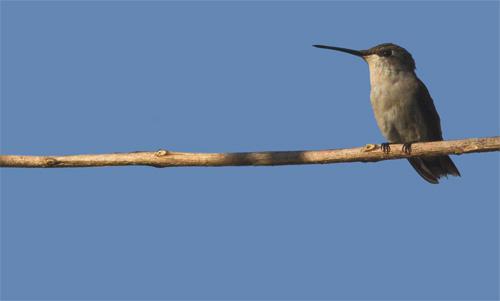
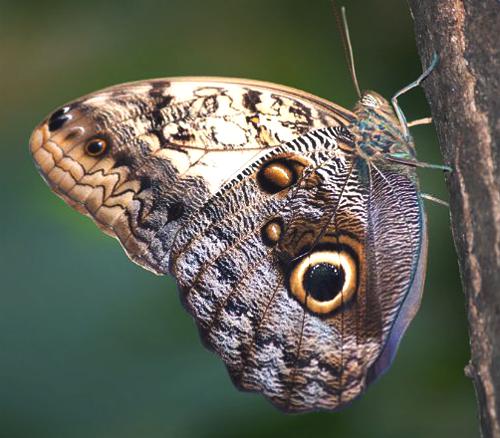
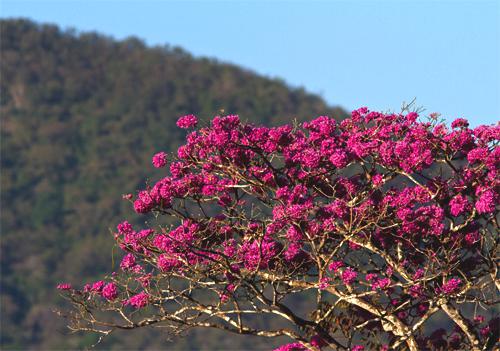
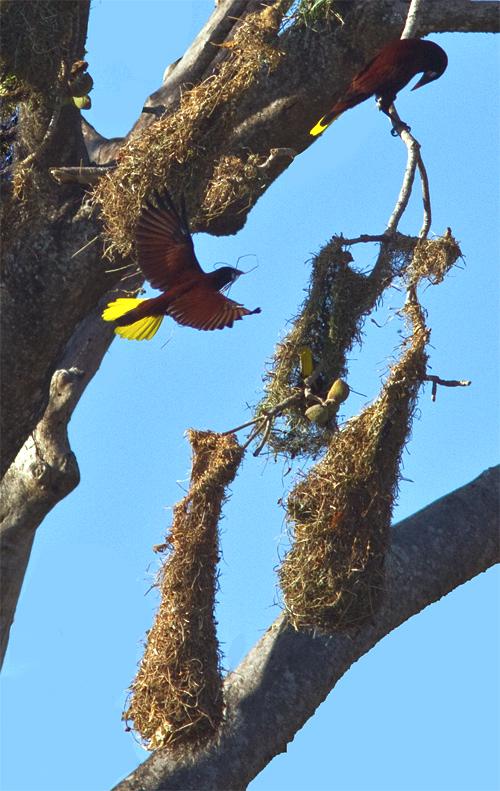
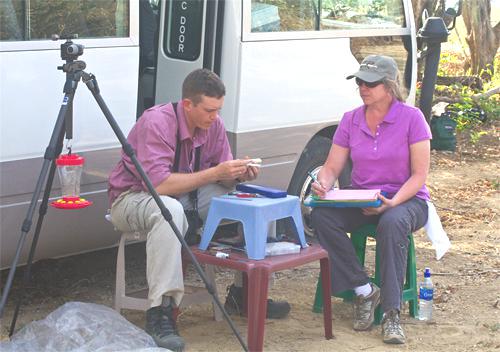




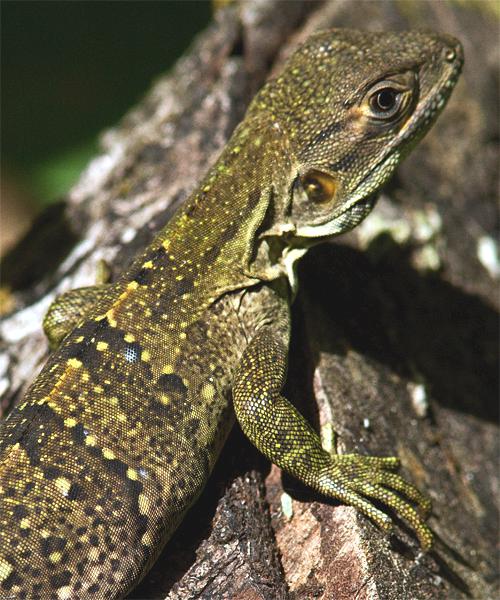
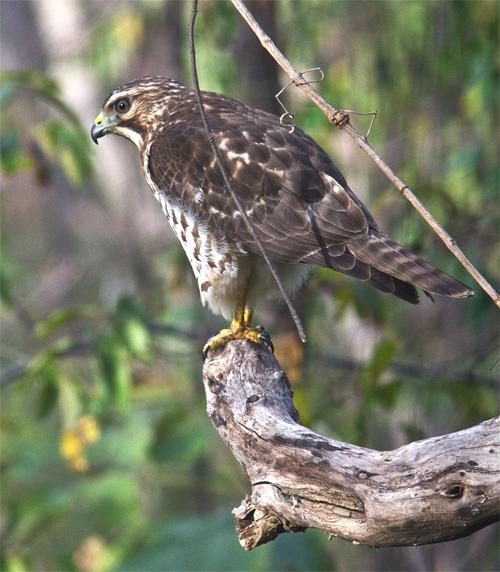
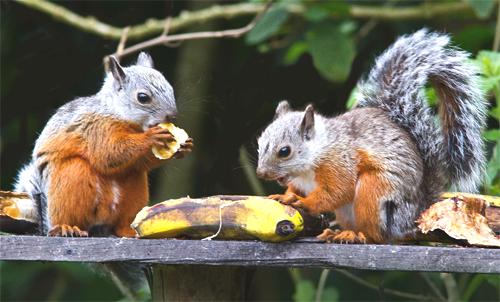

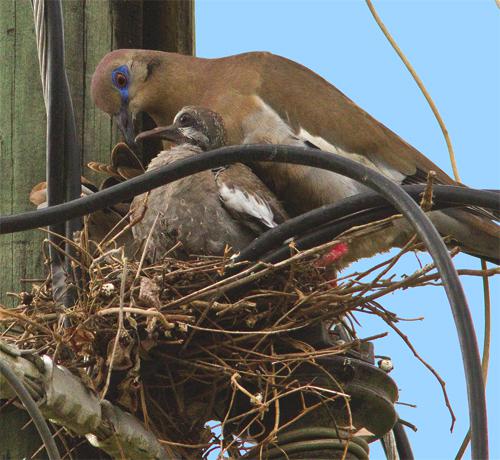


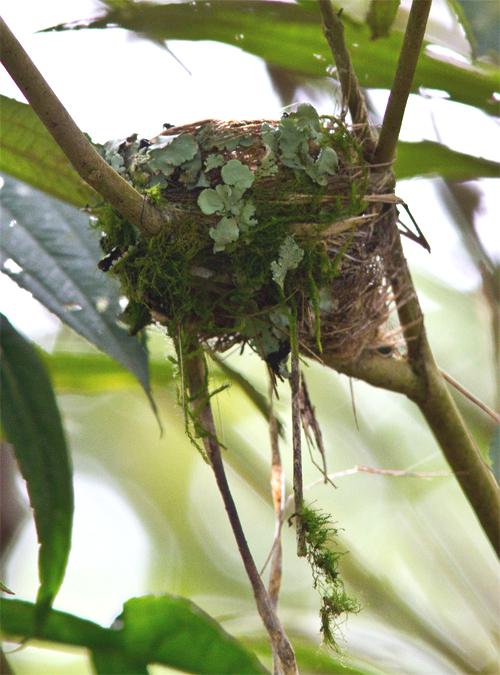


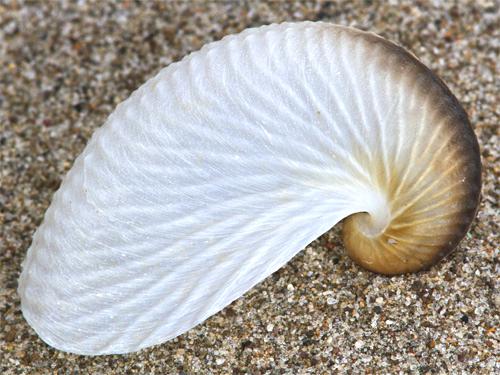

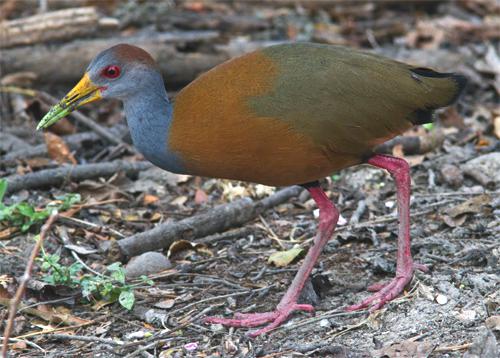
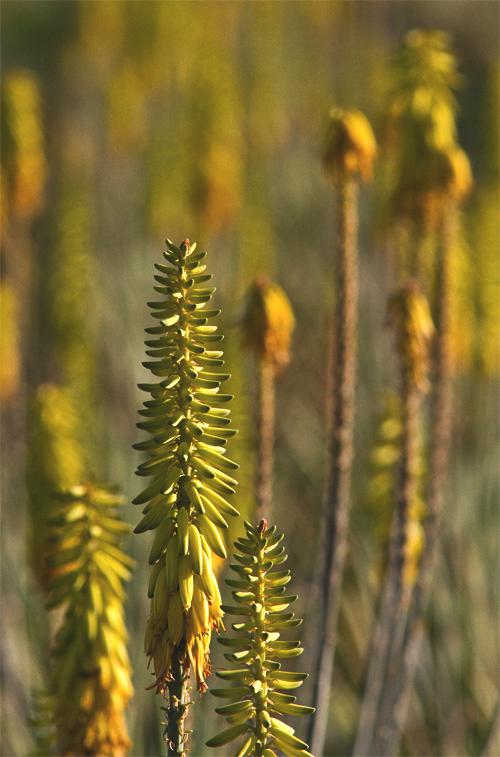
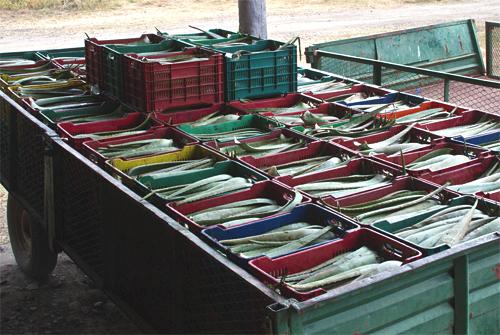
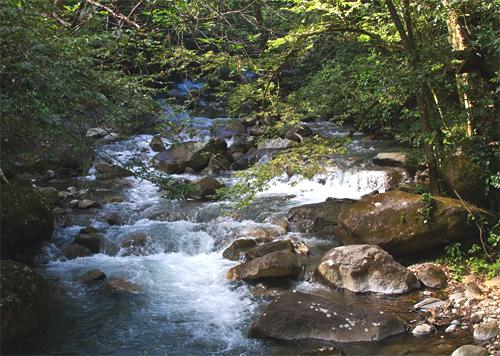
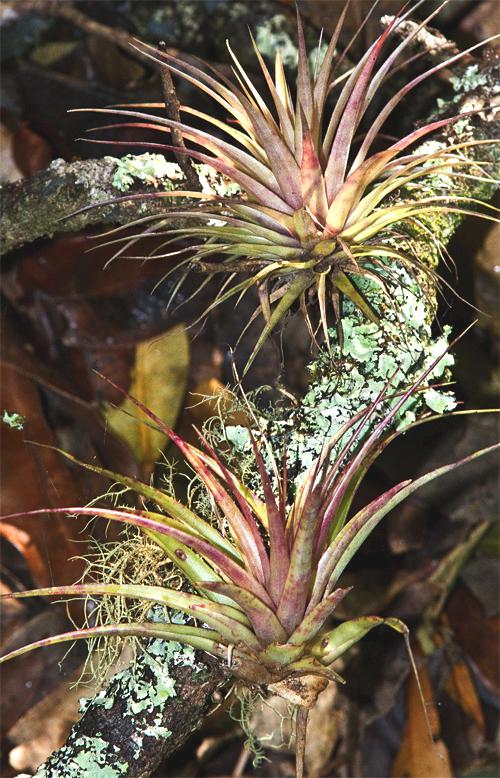
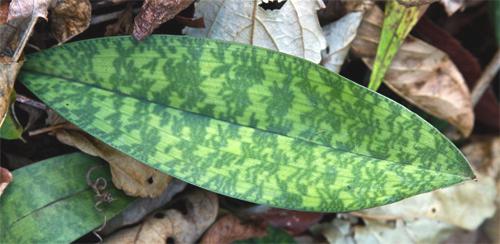
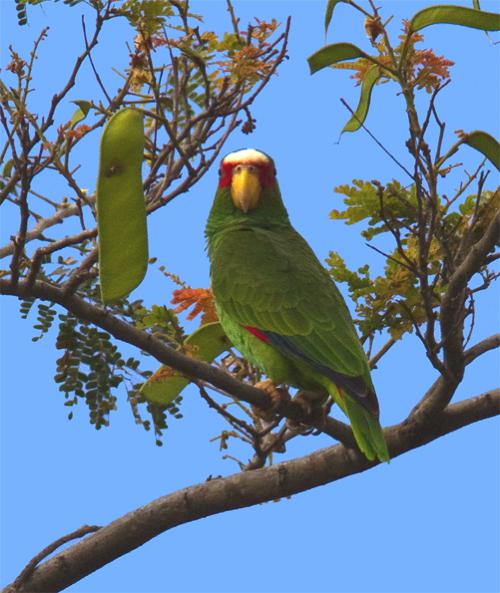
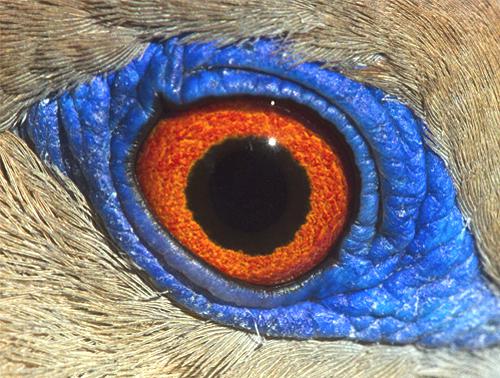

 Oct 15 to Mar 15:
Oct 15 to Mar 15: